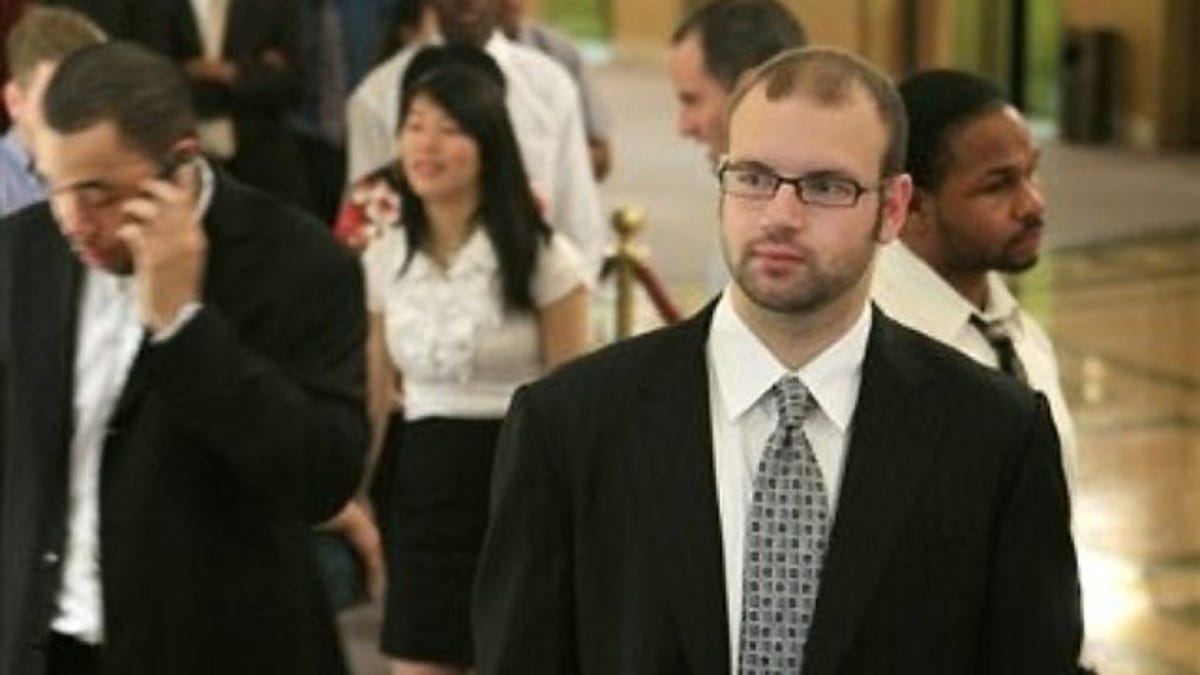
AP
The announcement today that the unemployment rate declined slightly to 9.4 percent in July while only 247,000 additional jobs were lost has been greeted as good news. The change in the unemployment rate puts the rate at what it was in May. Yet, even a rough look at the numbers indicates that the true unemployment rate has been getting significantly worse over the last few months.
How is it possible for the unemployment rate to essentially remain unchanged when 247,000 jobs have been lost? The reason is simple -- the number of people who stopped looking for work rose dramatically. Six hundred thirty-seven thousand additional people no longer consider themselves looking for work. This is by far the largest drop in the number of people who consider themselves in the labor force during the last year. -- It is almost twice the 358,000 increase in the people who left the labor force during June and almost four times the average monthly increase of 167,333 over the last year. Jobs are sufficiently scarce and the prospects of people finding them at wages that they are willing to work for so low that many individuals don't think that it is worth their time to even look for a job.
Part of the drop in unemployment is also due to the fact that some people are running out of unemployment benefits and taking part-time jobs. There is usually a big increase in the rate that people find jobs during the last few weeks that they have unemployment benefits. In July 102,670 people saw their unemployment benefits run out. That number rose to 141,538 in August and is expected to soar to 486,049 in September. It will keep on rising each month hitting 1.5 million in just December alone. This past Sunday on ABC's "This Week" Treasury Secretary Tim Geithner only promised "to look very carefully at [these lost benefits] as we get closer to the end of this year." Larry Summers, President Obama's chief economic advisor, was similarly noncommittal when he was interviewed that same day on CBS's "Face the Nation."
If we include the normally counted number of unemployed as well as those who have recently given up looking for work and those who have taken a part-time low paying job because they can't find full-time work, the implication is that the unemployment rate for July would be at 16.3 percent These discouraged workers will again look for work once the economy starts to improve, but this 6.9 percentage point gap between publicly discussed unemployment rate and these discouraged workers is unusually large.
The changes in unemployment also mask the large drops that are still occurring in private employment -- construction, manufacturing, retail trade, and professional and business services all suffered large declines. The two of the three areas where employment has increased are government related, either education and health services or general government employment.
These changes do coincide with what is happening with GDP. During the second quarter the private sector kept on shrinking at an annual rate of 3 percent. Overall, GDP declined by "only" 1 percent at an annual rate, but that was because real federal government consumption expenditures and gross investment soared by 11 percent. Real state and local government consumption expenditures and gross investment increased, too, but by a more modest 2.4 percent.
The large and growing number of discouraged workers will make the real unemployment rate hard to bring down in the future.
John Lott is an economist and author of "Freedomnomics."
